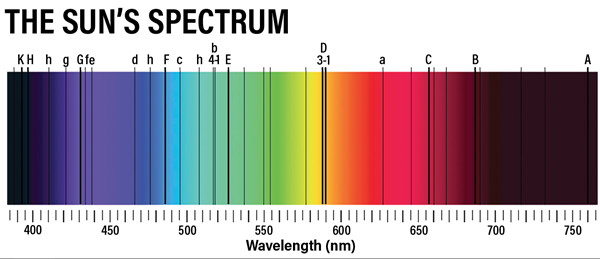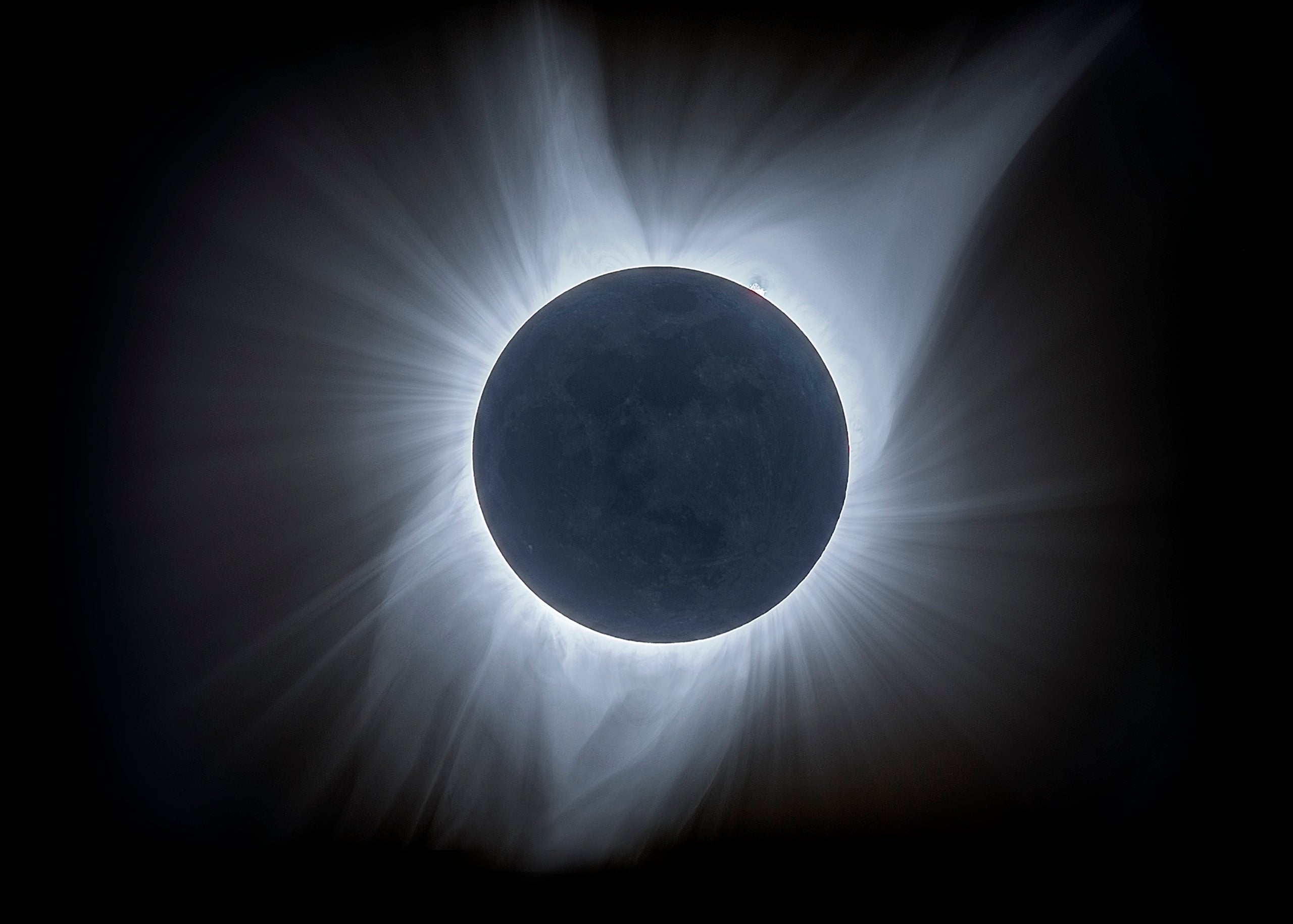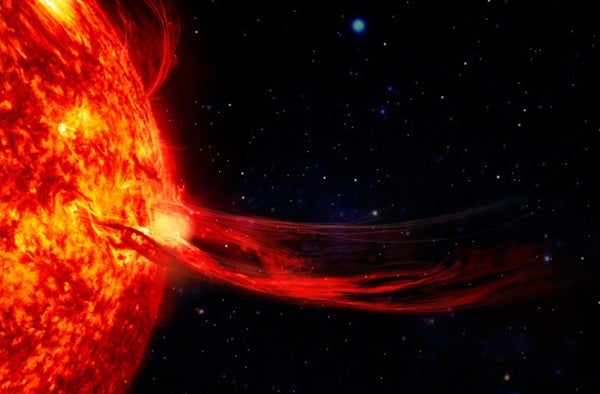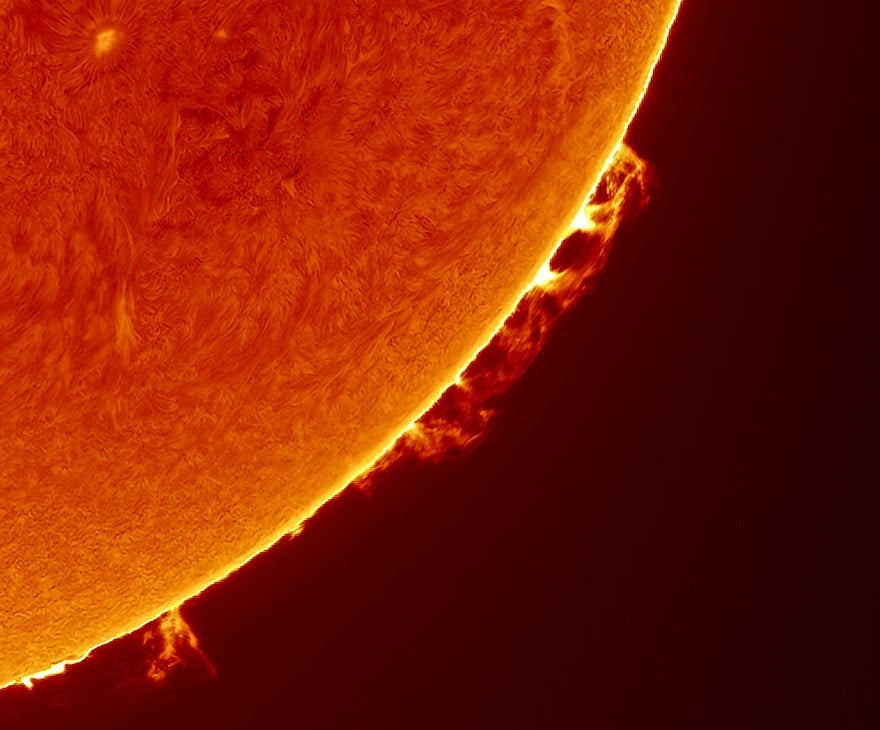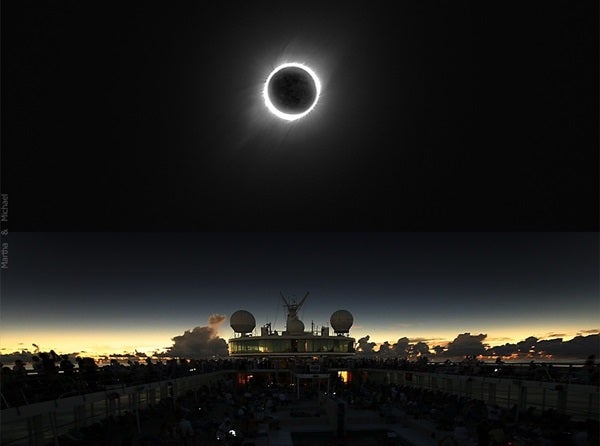Q: Does the Sun contain elements other than helium, such as uranium and iron, in its core?
Mike Burkhardt
El Cajon, California
A: Hydrogen and helium are by far the most abundant elements found in the Sun, making up about 98 percent of its mass, but other, heavier elements play an important role in the physical processes that occur in the Sun. The process of nuclear fusion combines hydrogen atoms to produce helium and the energy that keeps the Sun shining.
The next three elements heavier than helium — lithium, beryllium, and boron — are sometimes formed as intermediate products during the fusion process. Elements even heavier than these are present throughout the Sun. They come not from nuclear fusion in our own Sun, but from previous generations of massive stars in the solar neighborhood, the remains of which have been scattered by supernova explosions. The same cloud of enriched material that formed the Sun also formed Earth and the other planets. Thus, the same naturally occurring elements that can be found on Earth, up to and including elements as heavy as uranium, are also present in the Sun.
Although elements heavier than helium are much less common than hydrogen and helium in the Sun, elements like iron, nickel, calcium, sodium, and magnesium are prominent in the solar spectrum and are important tools for astronomers studying the Sun.

